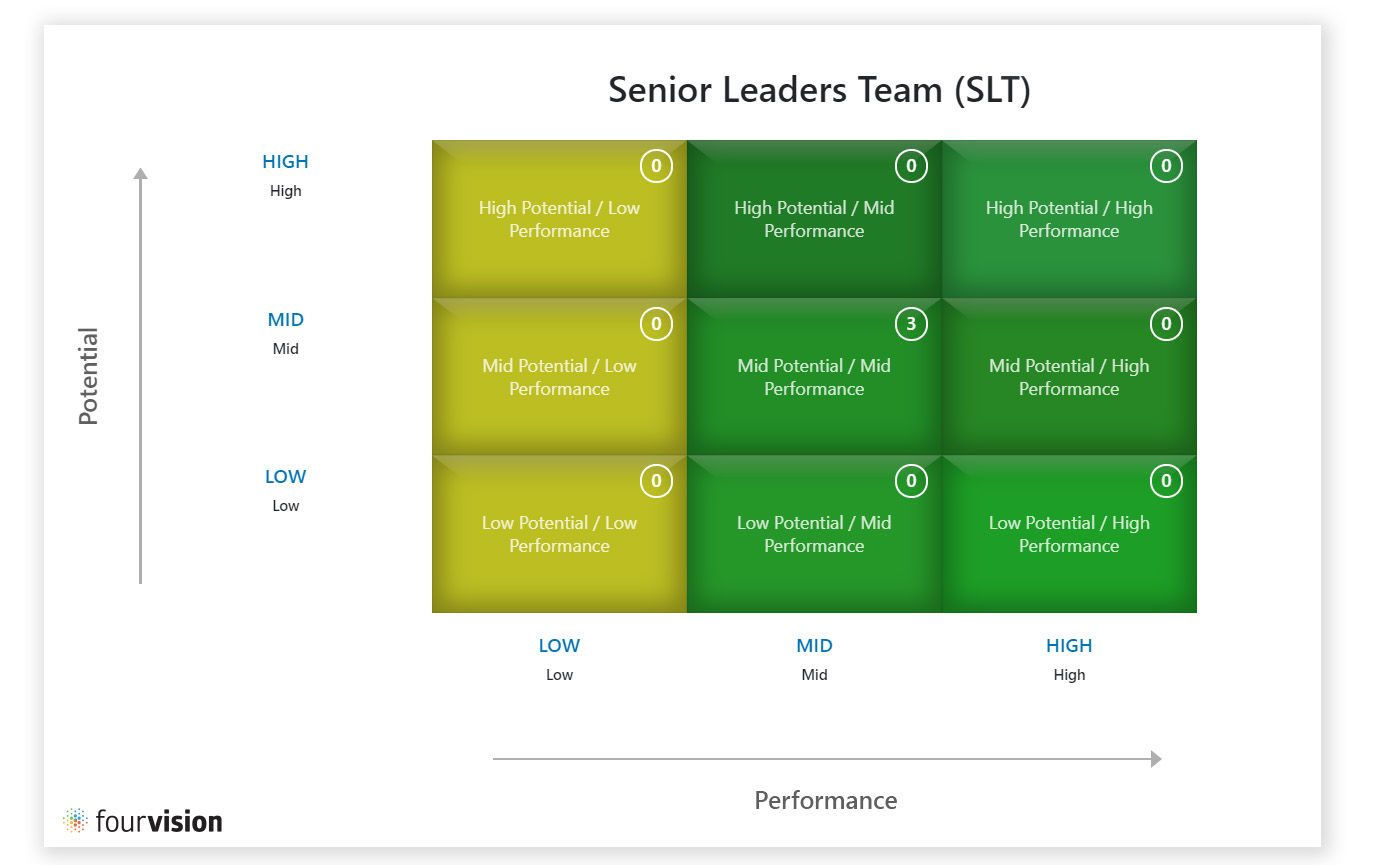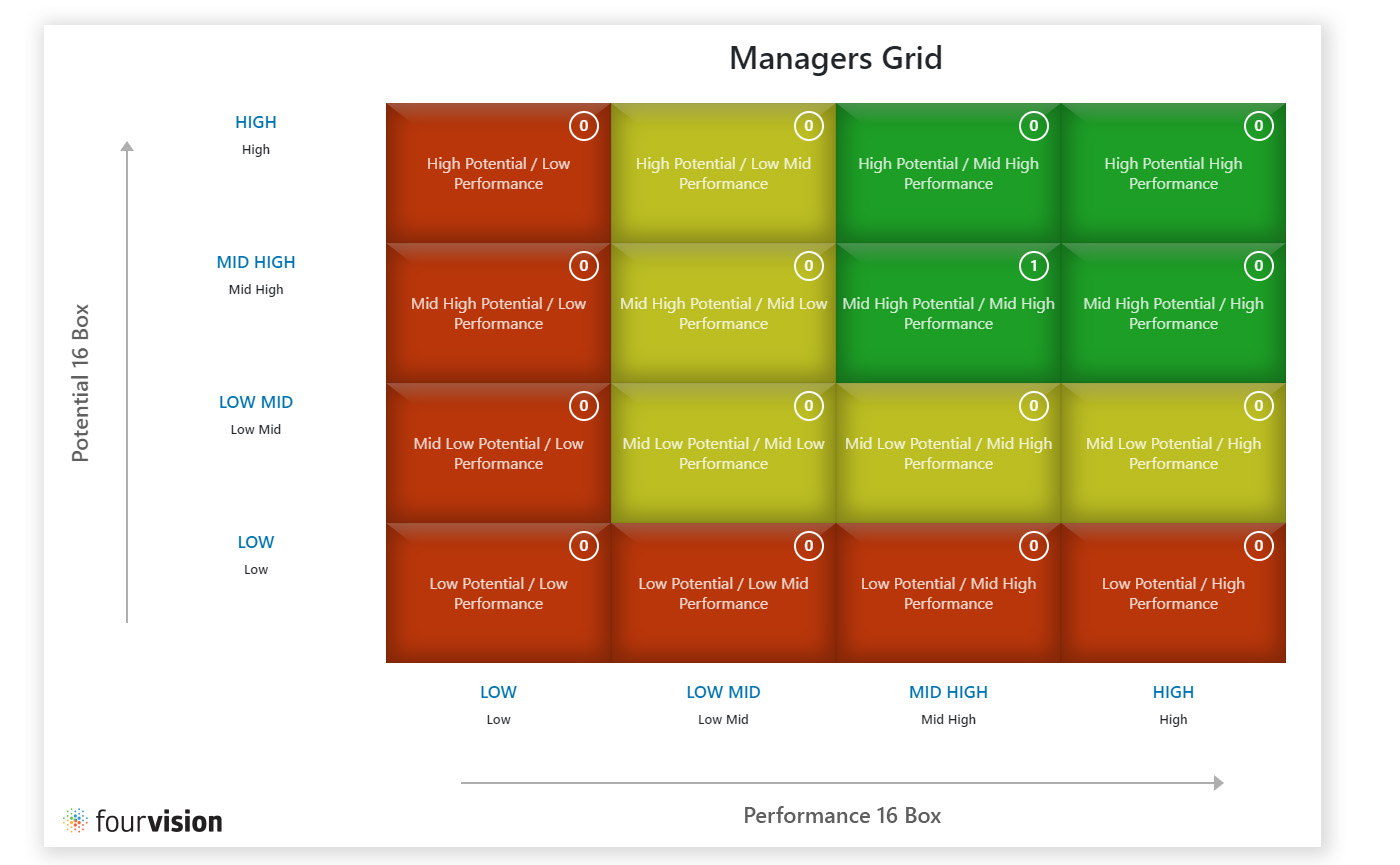Much has been discussed in the HR world about the 9 box matrix to assess talent within organizations. Its advantages, its hows and whats and its shortcomings. In this article we’ll take you through this model and why we came up with a different approach to make your life easier when evaluating performance and potential. Let’s dive right in!
What is the 9 box talent matrix
Created in the 1970s by McKinsey, the 9 box talent matrix is a standard talent management tool in which employees are divided into nine groups, based on their performance and potential. When assessing employee performance, managers often pay attention to two things: how well are employees performing, and how well they are likely to perform in the future.

As you can see above, based on their performance and potential, employees are placed in one of the 9 boxes. Ideally, you’d like to have your team in the green! However, that can’t always be the case and the boxes will give you a better understanding of what approach to take in terms of management.
Why is it so popular
It is not that complicated. Companies want to know who are their best people and if they will stay. Also, they want to know that there is a pipeline for more people to do their best. Lastly, they want to make sure there are processes for managing poor performers.
If these are sorted, then HR is doing a good job.
Don’t get us wrong, the 9 box matrix is a great place to start the conversation about talent. It is simple, straightforward and easy to implement. But you can do better, can’t you?
Issues with the 9 box talent matrix
Let’s face it, evaluating people is hard. The 9 box often creates confusion and resentment among managers and employees. People struggle to differentiate between performance vs. potential and how’s that used to put people in a box. Things are not that black and white in the actual world. Employees who exhibit extremely high performance and very low potential are rare in most jobs. Similarly, there are few jobs where people can achieve all the right things if they are doing things all the wrong way.
So, what happens in a lot of companies, is that employees end up in the middle box. No fuss about it and everyone moves on with their lives.
Our own 16 box talent matrix: A new approach
The 9 box talent matrix is available in the Fourvision Performance Management web app. It is the standard method for talent management and a lot of companies use it.
However, after listening to some of our customer’s concerns, we reached the conclusion that we should work on an alternative to the 9 box matrix. The 16 box talent matrix was born!

It looks a bit more complex but actually it isn’t. It gives you a bit more flexibility and avoids the middle box like we mentioned before. Here are 3 things to consider for adopting this solution:
- More options – 16 boxes means 7 more options to better define where employees sit in the talent grid and avoids great generalizations when compared to the 9 box matrix;
- No more ‘averages’ – This solution doesn’t give you a middle spot in the grid, so it encourages managers to take a more thoughtful approach when evaluating their teams. When it comes to performance nobody wants average, right?
- Serves more purposes – We can work with you to figure out if this new matrix can be applied to other measurements within your organization. Why keep it confined to performance vs potential only, when we can use it for flight risk evaluation, for example? Give it a thought.
We can even steer what was the common use of the 9 box matrix to something more reliable. Instead of having a manager choosing the box where an employee fits in, we can base that placement in a score from a questionnaire filled in by both employee and managers. Why? You would end up with a solution to evaluate the talent that is more fit-for-purpose and more capable to deal with the usual hurdles of this process.
In conclusion
We recognize great value in this 16 box matrix model, so we also made it available in our Performance Management web app. It is another solution to think about if you want to improve and have a different approach to performance management and succession planning.
This topics can be overwhelming, so if you have any questions about this and would like to see it in action, please feel free to drop a line on our chat box or through our contact page right here.
Did you enjoy this article? Take a look at other articles related to Performance Management:




